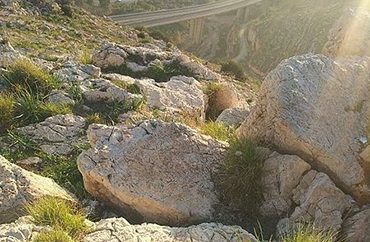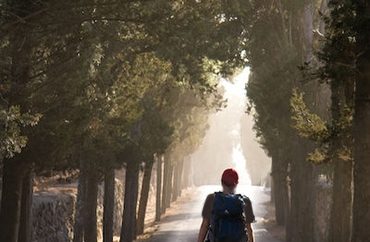Things to Do in Safed
Things to do in Safed Israel
With the help of a map and this guide, you’re well on your way to getting the most from your Tzfat (Safed) experience.

Artistic Niche in the Old City (Photo: גמלאי עיריית טבריה, CC BY 2.5)
Depending on your personal preference, of course, quality tour guides are available. All over the central area of Safed you will find signs providing historical commentary on the places you see.
Our tour is concentrated mainly around the Old City, with the reconstructed Jewish Quarter and Tzfat’s commercial center. A circular road, Jerusalem Street, is a helpful base when it comes to navigating Tzfat. In the center of the circle, from many points you will see the Metzuda Park, also known as Citadel Park, a historic park overlooking the Old City.
Tzfat Israel History
Typical of many archeological and historical sites in Israel, Tzfat offers the visitor a time tunnel into the past, with many centuries of different civilizations that lived in the same land.
Biblical Landmarks
Close to the landmark stone overpass where HaPalmach Street crosses Jerusalem street is the Cave of Shem and Ever, the son and grandson of Noah, respectively. HaPalmach street is named after the famous Palmach Jewish fighting corps, which launched an offensive to take Safed on May 6, 1948, during Israel’s War of Independence. After failing to capture the Citadel, the Palmach soldiers were forced to withdraw from Safed, but not without having earned a place in history. The Palmach became the foundation of the IDF, the new Israeli army, being reorganized into three IDF brigades: the Negev Brigade, the Yiftach Brigade and the Harel Brigade.

Jerusalem Street (Photo: גליה דוידסון, CC BY 2.5)
Mameluke Conquest of Safed
Turning into Tet-Zayin Street from Hanassi street, you can find the Caravanserai – a relic of the 13th and 14th century conquests of the Mamelukes, a people of Egyptian origin. Once used as a mosque, the building has a sister Mameluke relic in Tzfat called the Red Khan. A short stroll away, just up the hill, is the Saraya.
Sayara
To get a feel for more recent history, follow HaPalmach street until Kikar HaAtzma’ut (Independence Square), adjacent to which is the imposing mid-Eighteenth Century Turkish governor’s palace known as the Saraya. At the front of the Saraya building stands a magnificent clock. Today, the Saraya building also includes a tourist information center.

Kikar Hameginim (Defenders’ Square) (Photo: צילום:ד”ר אבישי טייכר, CC BY 2.5)
If you wish to make the climb to the Metzuda Park, start from Jerusalem street and turn into Hativat Yiftach street. From the historic park at the hill’s summit, you can descend to the opposite side of Jerusalem street via steps. Turning left into Jerusalem street, you’ll find Bar Yochai street at the first fork. This street takes you straight into the Old Jewish Quarter. Bar Yochai street opens up into Kikar Hameginim (Defenders’ Square). A sign points to the two-story house that served as a command post of the Jewish defenders in the 1948 War of Independence. Poised on a stone mount further down Jerusalem street is a Davidka (little David) cannon. Like its sister in Jerusalem, this homemade mortar was a weapon with a bark worse than its bite. The main effect of the Davidka was that it intimidated the Arab adversaries with its loud noise.

Old City of Safed (Photo: מצילומי יהודית גרעין-כל, CC BY 2.5)
Tzfat Jewish Quarter and Artists’ Quarter
The Great Stairs form a very long staircase that used to divide the city in two, separating the Arab and Jewish sections of the Old City. To visit alleyways housing the many tourist stores and the famous synagogues of Safed, descend the stairway as far as Alkabetz street and Beit Yosef street.
Towards the base of the mountain slope, past Kiryat Breslov, you’ll find the famous ancient Jewish cemetery of Safed. According to Jewish tradition, the influence of tzaddikim remains with us and their contribution to the world continues forever. So, too, Safed’s ancient cemetery is “living history.”
Things to Do in Safed: Did You Know?
Just outside the highway entrance to Tzfat is a Keren Kayemet Le-Yisrael (Jewish National Fund) Tree Planting Center. Founded back in 1901 and well-known for planting pine forests in Israel, the KKL-JNF rehabilitates rivers, fights desertification, and develops recreation in nature.







